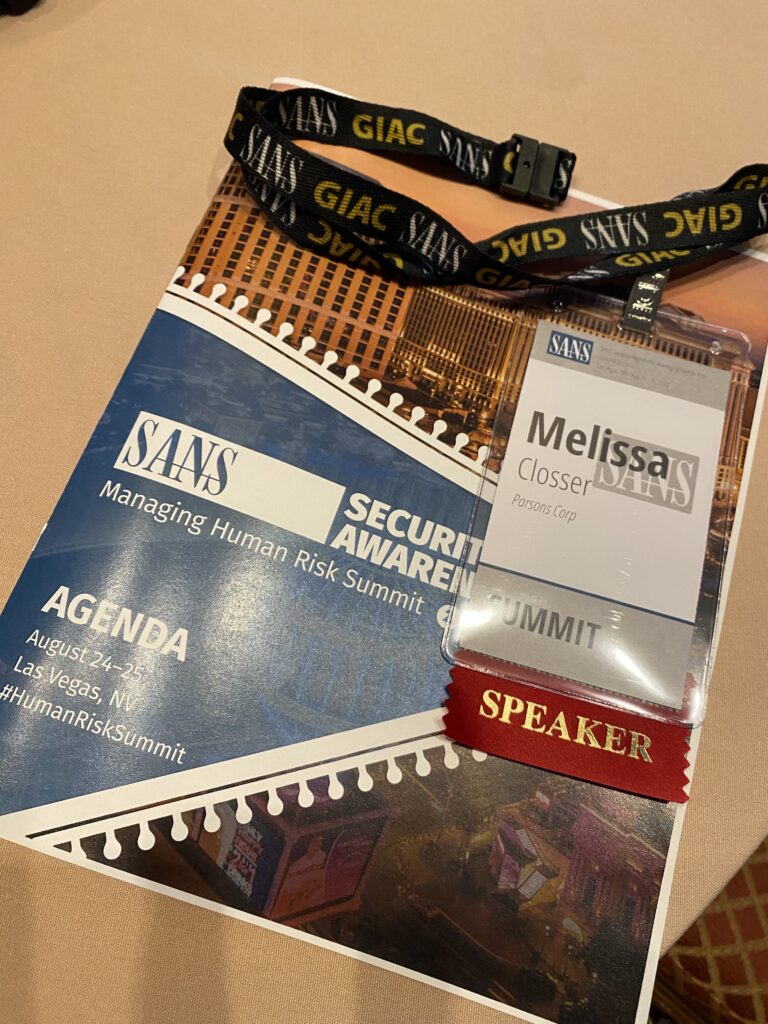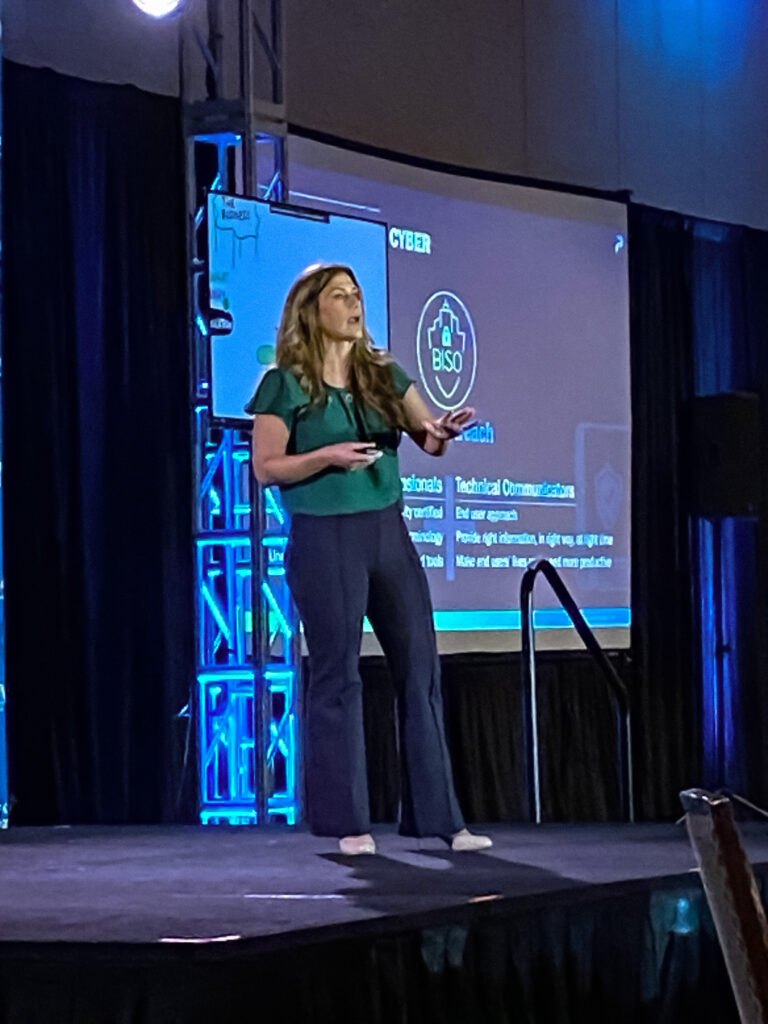
I never thought of myself as a ‘technical’ person. I was more comfortable designing brochures, writing social media posts, and creating marketing videos. But after 15 years working in marketing and communications, I closed that door of my career when I had my son. I wanted to be closer to him and my husband, who had just begun his new career as our city’s mayor. Taking a purchasing job at a local factory wasn’t exactly the role I wanted, but being close to my family was more important than my career.
While there, I wrote work instructions, policies, and reports, and designed user’s manuals, learning modules, databases, and other documentation. These tasks made me feel reenergized, and I discovered I had stumbled on a new career path: technical communication.

Being Part Of Security Innovation
With 82% of security breaches involving social attacks, errors, and misuse, our Business Information Security Office (BISO) knew a critical component to protecting our network is employee security communications, awareness, and education. I joined the BISO team to develop and lead BISO Outreach, working directly with employees to advocate for stronger security practices.
Although the BISO is commonly a singular role in the cybersecurity industry, our Security Operations (SecOps) team took this idea and spun it into an entire office. This approach arms BISO advisors with the knowledge of each business group’s unique goals, methods, and workstreams. By providing this information during security initiatives’ early development stages, our SecOps team has more insight on how to develop security for, and deploy it to, the business.
Using Technical Communication To ‘Translate Cyber’
Technical communication is more than technical writing; it is a user-centered approach to providing the right information, in the right way, at the right time to make someone’s life easier and more productive (Society for Technical Communication).
Technical communicators are information architects, instructional designers, usability and human factor professionals, visual designers, e-learning developers, and more.
While developing BISO Outreach, I added graphic design and storytelling elements to our security presentations and Workplace campaigns. By translating ‘cyber,’ security threats were now easier for our employees to understand. After the first year of implementing technical communication techniques, we saw a steep decline in category 5a noncompliance cases because our employees had a better understanding of the role they play in security. We also saw an increase in user interaction and comment rates on our Security 360 Workplace page. Because of our success, my team grew to three and matured into BISO UX (User Experience). We now have three new technical communication strategies: User Persona Development & Analysis, Security User Behavior & Trend Analysis, and Security & Usability Metric Analysis.
Being A Part Of Women In Cybersecurity

I ended my second year with Parsons as an official cybersecurity subject matter expert (SME) by being selected to present at a national security conference. In August 2023, I presented Instructions Not Included: Technical Communicators Rewrite How Security Speaks Cyber to thousands of people at the SANS Security Awareness Summitt in Las Vegas, NV. Furthering my place in cybersecurity, I was also selected to be a part of Women in Cybersecurity’s (WiCyS) Speaker Spotlight Program. WiCyS is a global community of women, allies, and advocates who are dedicated to the recruitment, retention, and advancement of women in cybersecurity. Through their partnership with Innovation Women, they help female cybersecurity professionals gain speaking opportunities in the cybersecurity arena.
I’m also working with the Society for Technical Communication’s webinar program where I’ll have the opportunity to present and raise awareness of the work we are doing in the BISO UX group at Parsons.
It’s unfortunate that only 14% of the cybersecurity workforce is comprised of women. Moving farther up the ladder of those 14%, 1% are in senior leadership positions (The Importance of Women in Cybersecurity, Utica University). But Parsons has given me the opportunity to use my technical communication talents to innovate the way we ‘speak cyber.’ There are not a lot of cybersecurity departments that focus solely on communication – across the board. My area of the BISO constitutes 100% technical communication, which encompasses communication, education, and the user experience.
Looking to the future, I’m excited to leverage opportunities that raise the level of the “technical communicator” role at Parsons and for the overall industry.